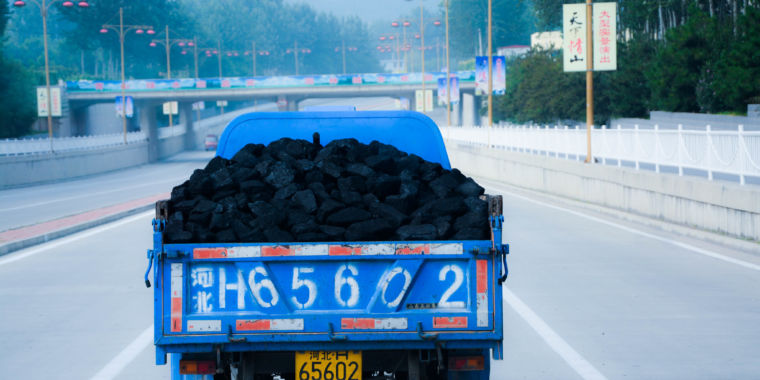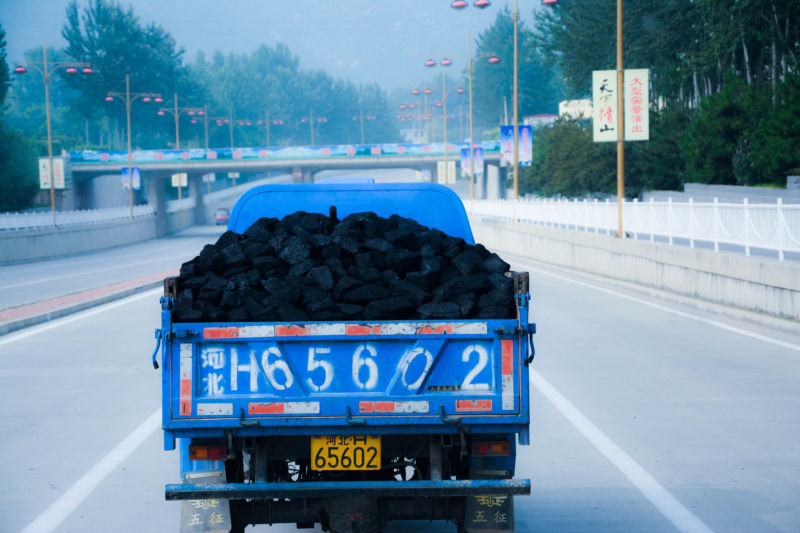
This is your panel on coal —
Pollution from coal and biomass burning blocks 13% of solar electricity.

Coal is seen by many as an enemy of renewable energy and the first fossil fuel in line for elimination as things like solar and wind generation have gotten cheaper. But counterattacks from coal can go even further than lobbying against pro-renewable policies, it seems. According to new research, China’s coal-driven air pollution is significantly reducing the output of solar panels by dimming the Sun.
China is easily number one in terms of new solar construction right now, accounting for over half of the world’s installs in 2017, for example. Between 2010 and 2017, China went from having less than 1 gigawatt of solar capacity to 130 gigawatts, and the country is headed for around 400 gigawatts by 2030. After a run of transformative economic growth powered by coal and other fossil fuels, China is dealing with choking air pollution that is a major driving factor in this solar push.
Recent research has compiled a record of solar radiation measurements around China going back to the late 1950s. The research shows a declining trend in solar radiation until about 2005, when it leveled off and began to tick back upward. That tracks the increasing particulate air pollution due to coal-burning power plants and manufacturing—as well as biomass burning—that has only recently been addressed.
A team led by Bart Sweerts at ETH Zürich took that record and fed it into generation models for China’s solar installations to calculate how much generation has been lost—and how much would be gained by cleaning up the air.
The researchers found that, over the entire record between about 1960 and 2015, the average potential solar generation declined by about 13%. Expressed in terms of capacity factor—the fraction of a solar panel’s maximum output that is actually produced on average—the drop from the start to the lowest point in 2008 was 0.162 to 0.142.

Enlarge / The impact of air pollution on potential solar output, here shown by capacity factor (the amount of electricity a panel produces compared to its technical max).
The change wasn’t the same everywhere, though, as air pollution and local conditions varied. The five worst provinces actually saw potential generation drops of fully 20-28%. These included industrial centers in the east but also some clearer high-elevation areas in the west where a small amount of air pollution can have a big impact.
If China could go back to its 1950s air quality, its existing solar installations in 2016 would have produced an additional 14 terawatt-hours of electricity for free. As more solar panels are built, that number would only grow. By 2030, cleaner air could net an additional 70 terawatt-hours of electricity each year—about 1% of total projected electricity generation at that point.
To put some dollar signs on these numbers, the researchers used the current feed-in tariff of $0.14 per kilowatt-hour and a projected drop to $0.09 per kilowatt-hour in 2030. In 2016, this would mean cleaner air would have brought $1.9 billion worth of electricity. In 2030, the extra 13% or so of solar potential could be worth over $6 billion per year.
For another comparison, solar panel efficiency improvements increased generation by about 10% between 2005 and 2017, helping to make them more cost-competitive. Getting back to 1950s air quality would do more than that in China. As a business proposition, air pollution is holding solar back.
Of course, the researchers note that this is a drop in the bucket compared to the total health and economic cost of air pollution in China. But it adds another valuable—and perhaps surprising—benefit to eliminating pollution from coal and biomass.
Nature Energy, 2019. DOI: 10.1038/s41560-019-0412-4 (About DOIs).









